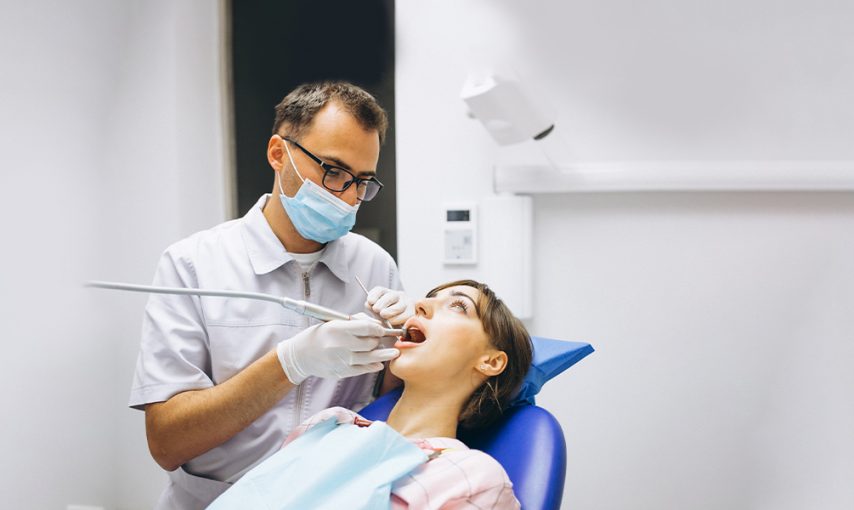A dental bone graft is a process conducted by dentists to supplement bone in a part of the jaw where bone loss occurs, or additional support is required. Bone for the process is taken from the part of the body for surgical fusing to the existing bone in the jaw. Synthetic bone material is also used for the process. If you aren’t aware of what bone grafting is, we suggest you continue learning from this article about the procedure and what you can expect after getting bone grafting.
Bone Grafting Explained
Bone grafting procedures are performed in several ways without changes in the primary system. Professionals from the dentist’s office near you make incisions in your jaw to attach other bone material.
Dental bone grafts are usually performed if the patient has lost one or more permanent teeth or is affected by gum disease. The preferred approach to augment bone in the jaw is to use the patient’s bone from the hip, tibia, or the back of the jaw. Autograft is the name of this process considered the gold standard to replace bone because it increases bony support and promotes faster heating besides new bone formation.
Why Might I Need bone grafting?
For reference, some common reasons for patients needing bone grafts are mentioned below.
- Tooth Loss or Periodontal Disease: Periodontal disease causes a patient’s jaw bones to deteriorate because of tooth loss. Loss of bone can affect the neighboring teeth and gum tissue. A bone graft can help stabilize the jaw and prevent further deterioration of the bone and long-term complications that might occur with it.
- Getting Dental Implants: Patients considering dental implants to replace missing teeth are familiar candidates for bone graft surgery. Dental implants are artificial tooth roots shaped like screws and embedded in the jawbone. A dental crown resembling the neighboring teeth is mounted over the impact to function as an artificial tooth. The bone grafting procedure helps build a sturdy base for the implant to provide the support needed by the artificial tooth to function appropriately.
- Bone Loss: Patients confronting compromises with their appearance because of bone loss can have a sagging facial appearance making them appear older and changing how they look. Bone loss is a familiar occurrence among adults but also affects people of all ages due to injuries and other health problems.
What Is Used to Build Bone?
As mentioned earlier, material from the patient’s body is preferred by dentists to build bone in the jaw. However, allografts where the bone is obtained from a cadaver also help build bone in the jaw.
Oral surgeons also use xenografts with bone from animals like cows and pigs to supplement bone, while synthetic material like calcium phosphate also helps in the process.
Preparing for Bone Grafting
Your medical professional provides instructions when preparing for bone grafting. They inquire about your entire medical history and medications, including blood thinners that can increase bleeding complications during surgery. They recommend having help to drive from the practice after the process, which leaves them groggy from the anesthesia.
Besides the above, no other preparation is needed for bone grafting surgery.
What Are the Risks of Bone Grafting?
All surgical procedures are susceptible to the risks of bleeding, infection, and reactions to anesthesia. Unfortunately, patients undergoing bone grafting surgery are also exposed to these risks. Therefore, the dentists advise patients to minimize the chances of infections like pain, swelling, nerve injury, inflammation, rejection of the bone graft, and reabsorption of the graft by keeping patients informed about them and providing antibiotics to control the infections besides painkillers to manage the discomfort.
In some cases, patients will also experience blood clots and anesthesia complications managed by medical professionals during the surgical process by monitoring patients constantly.
Dental bone grafts help prevent long-term health consequences associated with tooth loss and gum disease. The process also provides additional bone material to support dental implants. Although patients tolerate the standard procedure well, the risks of side effects and complications remain as with any surgical procedure.
Patients can minimize the risks of confronting problems by following the advice of their medical professional during their recovery to improve their chances of maintaining good dental health later.
Patients experiencing complications after surgery are advised to contact their provider immediately whenever they experience pain worsening several days after the process or notice increased swelling around the gums. The medical professional provides any help required by the patient to ensure their dental health is cared for appropriately.
Family Dental Care — Crestwood performs bone graft surgery on many patients with loss of jawbone because of different conditions. Patients needing help to augment their jawbone are recommended to schedule an appointment with this practice to receive the necessary procedure.


